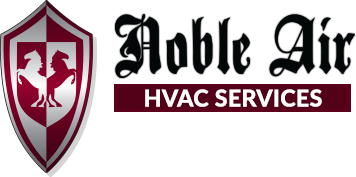Carbon monoxide is know as a silent killer because of its very properties. It does not have an odor, is colorless, has no taste, and is easily broadcast throughout a space. There are many sources of carbon monoxide, including the following: gas and kerosene space heaters, chimneys and furnaces that leak, furnace back-drafts, gas-powered machines and equipment, and even tobacco smoke. It can be harmful, even fatal, if inhaled and in commercial spaces, such as manufacturing, restaurants, and even offices and retail spaces. This is because all can operate equipment for the purpose of heating, which emits carbon monoxide.
How to Prevent Carbon Monoxide Leaks
Deaths from carbon monoxide exceed 400 per year, according to the Centers for Disease Control and Prevention. In addition, there are some 20,000 emergency room visits annually resulting from carbon monoxide. Harm and fatalities continue to be a problem because consumers and businesses alike use appliances, equipment, and machines that produce this poisonous gas.
CO is found in fumes produced any time you burn fuel in cars or trucks, small engines, stoves, lanterns, grills, fireplaces, gas ranges, or furnaces. CO can build up indoors and poison people and animals who breathe it. The most common symptoms of CO poisoning are headache, dizziness, weakness, upset stomach, vomiting, chest pain, and confusion. —Centers for Disease Control and Prevention
Some symptoms of carbon monoxide exposure of 70 parts per million are nausea, headache, weakness, and dizziness. When exposure reaches poison levels, or, above 150 to 200 parts per million, it causes shortness of breath, blurred vision, vomiting, confusion, and loss of consciousness. To keep your employees safe and prevent carbon monoxide leaks, do the following:
- Install carbon monoxide sensors and alarms. These devices detect and alert businesses to the presence of dangerous levels of carbon monoxide in the air. When this happens, immediate evacuate the building and phone the fire department. Then, conduct a head count to ensure everyone is out of the building. If possible, open the windows and doors as you exit the premises.
- Schedule regular maintenance. Your should have your commercial furnace inspected at least once per year, the most ideal time would be prior to the heating season. Have the furnace, all vents, chimneys, fireplaces, and any fuel-burning equipment or appliances inspected to ensure each is in good working order. This preventative measure can help to identify problems, including possible carbon monoxide exposure and protect your employees.
- Have exchange heaters inspected. Failing heat exchanges are the single largest source of carbon monoxide, but, are usually not part of the inspection process. Request your technician inspect all heat exchanges to ensure these are not leaking carbon monoxide.
- Get vents and flues cleaned. These are also common sources of carbon monoxide due to blockages. Have flues and vents cleaned regularly to prevent obstructions from causing carbon monoxide to run through the system.
- Do not use gasoline powered equipment in a closed space. We’ve all heard the stories of people who have been injured or killed due to carbon monoxide emission from operating gasoline powered equipment in closed spaces. Never use these in closed spaces to prevent potential tragedy.
If your commercial system has not been inspected recently, now is an excellent time to schedule service. A professional technician will inspect your systems and make any necessary repairs.

